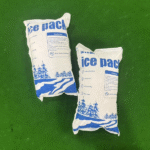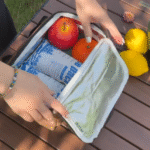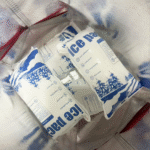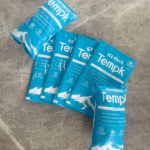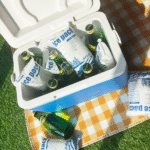Cold Chain Storage and Distribution: How Do You Keep Products Safe and Efficient?
Aktualisiert im November 2025
Maintaining the quality of vaccines, fresh produce and other perishable goods depends on the integrity of cold chain storage and distribution systems. Cold chain storage and distribution refers to all the facilities, vehicles and procedures needed to keep temperature sensitive products within precise ranges from origin to end user. In 2025 the global cold chain logistics market is valued at around US$436 billion and is forecast to exceed US$1.3 trillion by 2034, representing a compound annual growth rate over 13 %. This guide gives you clear, actionable advice on selecting the right storage, managing distribution and staying ahead of new regulations and technologies.
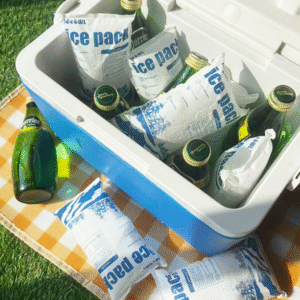
What cold chain storage and distribution mean — and why they are critical to food safety, pharmaceutical efficacy and customer satisfaction.
How to choose and optimise cold storage facilities — including the importance of temperature zones, insulation and energy efficiency.
How to streamline distribution networks and last mile delivery — with practical tips on route optimisation, vehicle design and real time monitoring.
Which trends and market insights matter in 2025 — covering market growth, regional dynamics, Automatisierung, sustainability and regulatory shifts.
Häufige Fragen — quick answers to high search volume queries about cold chain logistics, temperature requirements and energy management.
What Is Cold Chain Storage and Distribution, and Why Does It Matter?
Cold chain storage and distribution encompass all the processes and infrastructure that keep temperature sensitive products safe throughout the supply chain. Storage focuses on maintaining stable temperatures during pauses in the journey, while distribution ensures products move between sites without breaking the temperature chain. Das System umfasst Kühllager, Isolierte Verpackung, temperature controlled vehicles and digital monitoring tools.
Understanding the Difference Between Storage and Distribution
Think of cold chain storage as the home base where products rest between production and delivery. Facilities are designed like multi room refrigerators, with chambers set for deep freeze (below –15 °C), gefroren (–20 °C to –10 °C), gekühlt (0 ° C bis 10 °C) and specialized pharmaceutical ranges (2 ° C bis 8 °C). Distribution covers the journey itself: loading docks, reefer trucks, Triebwagen, air freight and the last mile to a store or consumer’s doorstep. Both stages rely on continuous temperature control; a lapse of even a few degrees can cause spoilage or compromised efficacy.
The importance of cold chain storage and distribution has grown sharply. A surge in e commerce grocery sales, the expanding biologics market and heightened consumer expectations for transparency have pushed companies to invest in smarter, umweltfreundlichere Kühlketten. Zum Beispiel, India’s e grocery segment alone is projected to exceed US$28 billion in 2025. On the pharmaceutical side, the cold chain logistics segment for biologics is valued at US$6.7 billion in 2025 and is expected to reach US$9.3 billion by 2034. These numbers underscore why storage and distribution practices must be robust and innovative.
Key Components of Cold Chain Storage and Distribution
| Komponente | Beschreibung | Was bedeutet dies für Sie |
| Lagerung | Dedicated cold rooms and warehouses maintain precise temperature ranges (deep freeze, gefroren, gekühlt, pharmaceutical and ambient) to preserve product quality. | Selecting a facility with the right zones prevents spoilage and ensures compliance with temperature specifications. |
| Verpackung | Specialized materials such as insulated boxes, Gelpackungen, dry ice and phase change materials stabilize temperatures during transit. | Matching packaging to the product’s thermal needs reduces temperature excursions and damage. |
| Transport | Kühlfahrzeuge, railcars and containers equipped with active cooling systems transport goods between sites. | Ensure carriers offer vehicles with reliable refrigeration and appropriate temperature settings. |
| Monitoring and Analytics | IoT -Sensoren, RFID tags and data loggers track temperature, Luftfeuchtigkeit und Standort in Echtzeit. | Continuous visibility allows you to catch issues early and prove compliance. |
| Compliance und Dokumentation | Regulations such as Good Distribution Practices (BIP), Gefahrenanalyse und kritische Kontrollpunkte (Haccp) und die USA. Gesetz zur Modernisierung der Lebensmittelsicherheit (FSMA) require detailed records. | Keeping accurate records and following guidelines helps avoid fines and ensures product safety. |
Praktische Tipps und Ratschläge
Integrate systems for full visibility: Choose storage and transport partners that provide integrated monitoring and alert systems, allowing you to track temperature and humidity from dock to door.
Trainiere dein Team: People are part of the cold chain. Frequent door openings, poor loading practices and delayed shipments can break the temperature chain; training prevents human error.
Plan for redundancy: Invest in backup generators and compressors in storage facilities and vehicles to maintain temperature during power outages.
Use AI powered route planning: Algorithms that consider traffic and weather can optimize delivery routes, reduce fuel consumption and minimize time out of refrigeration.
How Do You Choose and Optimise a Cold Storage Facility?
Selecting the right cold storage facility involves understanding product requirements, facility design and energy efficiency. The average cold storage facility in 2025 is over 42 years old and consumes four to five times more energy than a conventional warehouse. Upgrading to modern, energy efficient facilities not only lowers costs but also reduces environmental impact.
Evaluate Temperature Zones and Facility Age
Products require specific temperature ranges to maintain quality. Frozen foods may need –10 °F to –20 °F (–23 °C to –29 °C), while fresh produce and dairy stay safe at 32 °F bis 50 ° F (0 ° C bis 10 °C). Vaccines and biologics usually require 36 °F bis 46 ° F (2 ° C bis 8 °C). Look for facilities that offer multiple temperature zones and have modern insulation and humidity control. Remember that refrigeration can account for roughly 70 % of a facility’s energy use—upgrading walls, doors and roofs with high performance materials can cut energy costs by 20–30 %.
Assess Design and Technology Features
Modern cold storage facilities incorporate automated storage and retrieval systems (AS/RS), robotics and IoT sensors to enhance throughput and reduce labour costs. Advanced sensors provide continuous temperature and humidity data, while predictive analytics forecast equipment failure and demand. Facilities with solar panels or natural refrigerants can further reduce energy costs and carbon footprints.
Consider Location and Scalability
Proximity to customers reduces delivery times and energy consumption. Jedoch, industrial land in major cities is scarce and expensive, so operators often invest in suburban micro fulfilment centres or multi client warehouses to improve last mile efficiency. Speculative construction—building cold storage without pre leased tenants—is rising in high growth regions like Texas, Florida and Georgia, which account for 47 % of new cold storage developments since 2020.
Tisch: Temperature Categories and Their Significance
| Temperature Category | Typische Reichweite & Beispiele | Practical Importance |
| Tiefes Einfrieren | Below –15 °C (5 ° F); used for long term meat storage and ice cream | Requires robust insulation and minimal thermal fluctuation to prevent freezer burn. |
| Gefroren | –10 °F to –20 °F (–23 °C to –29 °C); used for meats, fish and prepared meals | Keeps products solid and reduces microbial activity, Haltbarkeit verlängern. |
| Gekühlt / Gekühlt | 32 °F bis 50 ° F (0 ° C bis 10 °C); used for fruits, Gemüse und Milchprodukte | Prevents spoilage while avoiding freezing damage, Erhaltung der Frische. |
| Pharmazeutisch | 36 °F bis 46 ° F (2 ° C bis 8 °C) | Adheres to strict regulatory guidelines; requires backup power and real time monitoring. |
| Cool / Ambient | 8 ° C bis 25 °C (46 °F bis 77 ° F); used for flowers, snacks and chemicals | Supports less sensitive goods and provides convertible zones for multi temperature warehouses. |
Tips for Optimising Storage
Map your inventory: Assign products to appropriate temperature zones and avoid cross contamination.
Invest in insulation and doors: High performance walls, roofs and dock seals can reduce energy use by 20–30 %.
Implement redundancy and backup systems: Protect inventory during power outages with standby generators and backup compressors.
Train staff on temperature management: Frequent door openings and improper loading can compromise the cold chain.
Embrace renewable energy: Solar panels on rooftops generate electricity and lower operational costs.
How Can You Streamline Cold Chain Distribution and Last Mile Delivery?
Optimising distribution involves balancing speed, cost and temperature control across every mile — especially the final one. The rise of online grocery and meal kit delivery means consumers expect fresh food delivered to their homes quickly. Im März 2025 UNS. e grocery sales reached US$9.7 billion, mit $4.2 billion spent on delivery alone. A recent survey found around 30 % of households use a mix of delivery, pickup and ship to home options, highlighting the importance of efficient last mile logistics.
Enhance Last Mile Logistics
Delivering temperature sensitive products to consumers’ doorsteps is one of the most challenging aspects of cold chain distribution. Companies are using several strategies to address this:
Collaborative warehousing: Sharing distribution spaces among multiple operators improves network efficiency and reduces empty miles.
Retrofit older facilities: Updating existing warehouses with modern cold storage technology expands capacity without building from scratch.
Partner with third party logistics providers (3Pls): Leveraging 3PL expertise streamlines delivery networks and allows you to focus on your core business.
Invest in composite truck bodies: New truck body designs use foam insulated composite panels that are lighter, stronger and more thermally efficient than traditional metal structures. Lighter vehicles improve fuel efficiency and help fleets meet sustainability targets.
Harness Technology for Distribution
Emerging technologies can transform distribution by providing visibility, predictive insights and sustainability:
| Technologie | Beschreibung | Impact on Distribution |
| KI-gestützte Routenoptimierung | Algorithmen analysieren den Verkehr, weather and delivery schedules to find the most efficient routes. | Schnellere Lieferungen, lower fuel costs and reduced spoilage. |
| Vorausschauende Wartung & Analytik | KI sagt Geräteausfälle und Nachfragetrends voraus. | Weniger Ausfallzeiten und höhere Kundenzufriedenheit. |
| IoT-Sensoren und Echtzeit-Tracking | Geräte überwachen die Temperatur, Luftfeuchtigkeit und Standort. | Sofortige Benachrichtigungen, fewer product losses and better compliance. |
| Rückverfolgbarkeit der Blockchain | Distributed ledgers record every movement and temperature reading. | Mehr Transparenz, weniger Betrug und vereinfachte Prüfungen. |
| Solarbetriebene Kühlung | Solar panels power cold storage units in remote or energy scarce areas. | Niedrigere Energiekosten und geringerer CO2-Fußabdruck. |
| Tragbare kryogene Gefriergeräte | Mobile Einheiten halten –80 °C bis –150 °C für Biologika und Gentherapien aufrecht. | Flexible distribution of ultra cold products. |
| Nachhaltige Verpackung | Biodegradable wraps and reusable cold packs reduce waste. | Supports corporate sustainability goals and meets regulatory expectations. |
Distribution Tips and Advice
Plan the entire journey: Don’t focus solely on the warehouse; every touchpoint from manufacturing to delivery affects product integrity.
Use the right vehicle for the job: Match truck compartments to product temperature needs and invest in composite materials for better insulation.
Prioritise visibility: Real time temperature and location monitoring ensures you know where your products are and how they’re doing.
Optimise dwell time: Efficient loading and unloading processes minimize the time goods spend outside temperature control.
Treat your 3PL as a partner: Collaborate with logistics providers who understand your regulatory requirements and can offer cross docking, transloading and value added services.
What Challenges Threaten the Cold Chain, and How Can You Overcome Them?
Maintaining an end to end cold chain is complex. Key challenges include regulatory compliance, weather disruptions, lack of visibility and equipment failure. Addressing these challenges requires both technology and process improvements.
Vorschriftenregulierung
Regulatory frameworks are tightening around the world. Zum Beispiel, die USA. FSMA-Regel 204, which became effective in January 2025, mandates that high risk foods be traceable within 24 Std.. The EU’s Good Distribution Practices (BIP) require electronic records for pharmaceuticals, and the World Health Organization insists on continuous monitoring for vaccine storage. Um nachzukommen:
Maintain detailed documentation: Record temperature readings, handling actions and chain of custody details at every stage.
Deploy digital traceability: Use blockchain and IoT devices to provide tamper proof records.
Train staff on regulations: Ensure teams understand Good Distribution Practices, HACCP and other applicable standards.
Weather and Environmental Factors
Hitzewellen, cold snaps and storms can disrupt temperature control. To mitigate:
Install robust insulation and backup power: Enhanced building envelopes and standby generators keep products safe during extreme weather.
Monitor weather data: Integrate meteorological forecasts into route planning to avoid temperature excursions.
Use energy efficient vehicle bodies: Composite materials reduce heat transfer and maintain stable internal temperatures.
Lack of Visibility
Without real time visibility, small temperature deviations can go unnoticed. Zu den Lösungen gehören::
IoT sensors and GPS tracking: Continuous monitoring triggers immediate alerts and allows proactive interventions.
Centralised data platforms: Integrate data from storage, transportation and last mile stages for a holistic view.
Prädiktive Analysen: Use AI to detect patterns that signal potential failures.
Gerätefehler
Refrigeration units, compressors and sensors can malfunction. To reduce risk:
Implementieren Sie vorausschauende Wartung: AI and analytics forecast equipment failures so you can repair or replace components before breakdowns.
Regelmäßige Inspektionen: Schedule routine checks of compressors, insulation and cooling systems.
Have a contingency plan: Identify backup vehicles and storage options to reroute shipments when equipment issues arise.
2025 Market Overview: Wachstum, Segments and Regional Insights
The cold chain storage and distribution market is experiencing rapid expansion driven by e commerce, pharmaceuticals and regulatory demands. Precedence Research reports that the global cold chain market will grow from US$436.30 billion in 2025 auf 1.359,78 Milliarden US-Dollar 2034, A 13.46 % CAGR. The Asia–Pacific region is expected to record the highest growth rate (≈14.3 %), while North America’s market is projected to rise from US$116.85 billion in 2024 auf 289,58 Milliarden US-Dollar 2034.
The Food Shippers of America estimates that the global market was over US$321 billion in 2023 and could exceed US$1.245 trillion by 2033. In der Zwischenzeit, Datoms reports that the cold chain market could accelerate to US$1.63 trillion by 2035 at a ~15 % CAGR. These forecasts emphasise the long term growth potential of cold chain storage and distribution.
Regional Dynamics and Market Segments
Nordamerika: A mature but expanding market dominated by a strong pharmaceutical sector and e commerce demand. Die USA. cold storage market alone is valued at US$39.6 billion in 2025 and expected to reach US$91.4 billion by 2032. Operators here invest heavily in modernising aged facilities and building micro fulfilment hubs.
Europa: Environmental regulations and sustainability mandates drive the adoption of energy efficient technologies. Aging infrastructure across many countries creates opportunities for retrofitting and new builds.
Asien–Pazifik: The fastest growing region thanks to urbanisation, rising incomes and the expansion of organised retail. Pre cooling facilities generated US$204.4 billion in revenue in 2024. Government subsidies, e commerce growth and the rising consumption of meat and dairy continue to fuel investment.
Emerging Markets: Länder in Südostasien, Africa and Latin America invest in cold chain capacity to support growing consumer markets and pharmaceuticals. Innovations like solar powered refrigeration and blockchain traceability are especially valuable where power reliability is a challenge.
Segmentation Insights and Opportunities
| Segment / Region | Key Statistics & Trends | Implikationen |
| Private vs. Public Warehouses | Private facilities held about 63.65 % des Marktanteils in 2024; public warehouses are growing quickly. | Owning a warehouse provides control and value added services, while public options offer flexibility and scalability. |
| Frozen vs. Gekühlt | The frozen segment generated 77.95 % of revenue in 2024; chilled zones are expanding for fresh produce and pharmaceuticals. | Frozen goods dominate, but growth opportunities exist in chilled and convertible zones. |
| Essen vs. Pharmazeutisch | Fisch, meat and seafood accounted for 31.69 % der Einnahmen; dairy captured 12.09 %; pharmaceutical demand for ultra low zones is rising. | Protein remains a core driver, but dairy and processed foods are gaining. Ultra cold storage is becoming critical for biologics and gene therapies. |
| Regional Development | Texas, Florida and Georgia account for 47 % of new cold storage developments since 2020; Asia–Pacific pre cooling facilities generated US$204.4 billion in revenue in 2024. | High growth states and regions offer opportunities for speculative construction, while established markets focus on modernising existing facilities. |
Growth Drivers and Sector Demand
Expanding global trade and consumer demand: International trade in perishables, along with demand for fresh, healthy foods, is a primary driver. Social media and global food trends expose consumers to new products, increasing demand for reliable cold storage.
E-Commerce und Online-Lebensmittelhandel: Rapid growth in online grocery and meal kit delivery amplifies the need for efficient last mile logistics. Online grocery sales are projected to account for 21.5 % der USA. grocery sales by 2025.
Pharma- und Biologika-Boom: Personalized medicine and advanced therapies require ultra cold storage. Etwa 20 % of new drugs in development are gene and cell therapies that need stringent temperature control.
Regulatorische Anforderungen: Food safety standards such as FSMA and global GDP rules mandate strict temperature monitoring. Compliance drives adoption of digital monitoring and documentation systems
Nachhaltigkeitsdruck: Companies adopt energy efficient technologies and eco friendly packaging to reduce carbon footprints and comply with environmental regulations.
What Trends Will Shape Cold Chain Storage and Distribution in 2025 und darüber hinaus?
Several macro and micro trends are reshaping the cold chain landscape. Understanding these trends helps you plan investments and stay ahead of the competition.
Evolving Consumer Preferences
Consumers are increasingly demanding fresh, healthy and locally sourced foods. Concepts like farm to fork and meal kits gained traction during the pandemic and continue to expand. Cold storage facilities are adapting to handle more fresh produce, dairy and meal kits, necessitating precise temperature control and transparency.
Automatisierung, Nachhaltigkeit und Energieeffizienz
Automation and sustainability go hand in hand. Urban and suburban micro fulfilment centres incorporate automated picking systems and advanced temperature controls to meet demand for faster delivery, while reducing energy use with technologies like LED lighting, solar panels and natural refrigerants. Greener practices can reduce energy costs associated with labour and utilities by almost 50 %.
Speculative Construction and Modernisation
Developers are building state of the art cold storage warehouses without pre leased tenants, betting on future demand. High growth regions like Texas, Florida and Georgia account for nearly half of all new developments since 2020. Gleichzeitig, aging infrastructure — the average cold storage facility is 42 years old — prompts operators to retrofit and modernise facilities.
Last Mile Optimisation
Delivering perishable goods to consumers’ doorsteps requires precision and speed. Innovations include collaborative warehouse spaces, retrofitted facilities, partnerships with 3PLs, and investment in composite truck bodies. Micro fulfilment centres near urban areas support quick delivery and reduce energy use.
Digitale Transformation
The industry is moving from reactive to predictive operations. IoT sensors provide real time monitoring down to 1–5 minute intervals, AI helps optimize routes and predict demand, and blockchain ensures tamper proof traceability. These technologies are essential for competitiveness, nicht optional.
FAQ
Frage 1: How big is the cold chain logistics market in 2025?
The global cold chain market is valued at around US$436 billion in 2025 and is projected to surpass US$1.3 trillion by 2034, growing at approximately 13 % jährlich. Estimates vary by methodology; some forecasts place the market between US$393 billion and US$453 billion in 2025 and rising to US$1.63 trillion by 2035.
Frage 2: What temperature range do vaccines require during storage and transport?
Vaccines and biologics typically need to be kept between 2 °C und 8 °C (36 °F bis 46 ° F). Ultra low therapies, such as some gene and cell therapies, may require temperatures as low as –80 °C. Maintaining these ranges protects potency and ensures regulatory compliance.
Frage 3: How can I reduce energy costs in a cold storage facility?
Energy costs can be reduced by upgrading insulation, using LED lighting, installing high performance doors and dock seals, and integrating renewable energy sources like solar panels. Automation and energy efficient equipment can cut labour and utility costs by up to 50 %.
Frage 4: What are the main challenges in cold chain distribution?
Key challenges include regulatory compliance, weather disruptions, lack of visibility and equipment failure. Addressing these requires continuous monitoring, vorausschauende Wartung, strong documentation and proactive planning.
Anregung
Cold chain storage and distribution are fundamental to food safety, public health and consumer trust. This article explains how to choose modern storage facilities with multiple temperature zones, invest in insulation and renewable energy, and train staff to maintain cold chain integrity. It offers strategies to streamline distribution through collaborative warehousing, composite vehicles and digital tools. Endlich, it highlights market growth, regional dynamics and emerging trends such as automation, sustainability and last mile optimisation.
To build a resilient cold chain in 2025:
Audit your facilities and fleet: Identify outdated equipment and invest in modern, energy efficient systems.
Implementieren Sie eine Echtzeitüberwachung: Nutzen Sie IoT-Sensoren, AI and blockchain to gain full visibility and predict issues before they occur.
Arbeiten Sie mit Experten zusammen: Work with trusted 3PLs, technology providers and partners to enhance compliance and efficiency
Focus on the last mile: Invest in micro fulfilment centres and advanced truck bodies to meet growing e commerce demand.
Bleib informiert: Monitor regulatory changes and industry trends to adapt quickly and remain competitive.
Um Tempk
Tempk is a leading provider of cold chain solutions that help businesses keep temperature sensitive products safe from origin to destination. We specialise in insulated boxes, Gelpackungen, pallet covers and reusable packaging designed for pharmaceuticals, fresh food and biologics. Our products are developed with cutting edge materials to offer long lasting performance and energy efficiency. We also provide digital monitoring tools that integrate with your existing systems, offering real time visibility and ensuring compliance with global standards. With years of experience and a commitment to sustainability, we help you build a resilient cold chain.
Nächste Schritte: Reach out to our team for a personalised consultation and discover how Tempk’s products and expertise can optimise your cold chain storage and distribution operations.

















